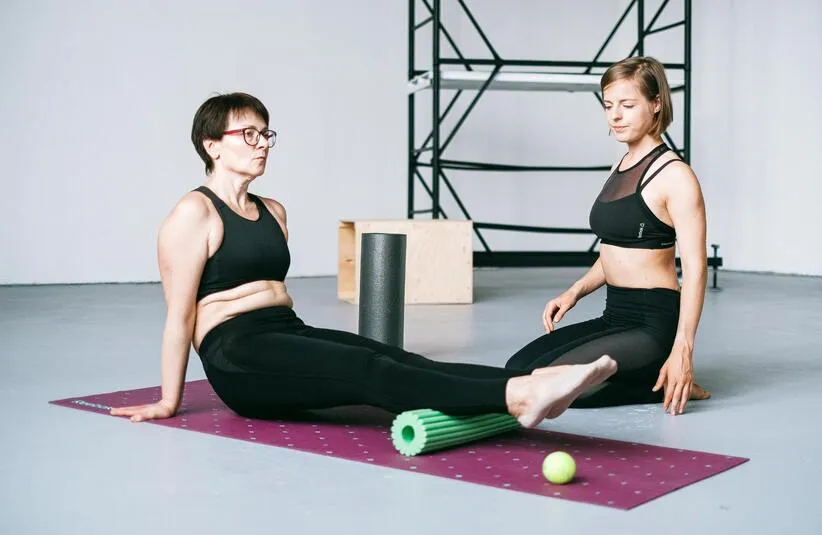Foam Rolling for Cold-Weather Muscle Recovery
Winter doesn’t care if you hit a new personal record! It’s here to stiffen your muscles and freeze your motivation. When the cold sets in, every workout just feels tougher. Enter foam rolling for winter fitness. Foam rolling is your overlooked, cylindrical sidekick for keeping stiff, chilly muscles mobile. Stop ignoring it and start your winter fitness muscle recovery the right way.
The Thermodynamics of Stiffness (Or, Why You Need to Roll)
From a physiological perspective, cold weather is a bit of a nightmare for athletic performance. When you step out into the chill, your body initiates vasoconstriction—narrowing blood vessels to conserve heat for your vital organs. While this is excellent for keeping your heart beating, it is terrible for your hamstrings. Less blood flow means less oxygen and fewer nutrients getting to the working muscles, which translates to that stiff, “Tin Man” feeling. Well, get ready to meet the oil for that “Tin Man.” Enter please, winter fitness helper: foam rolling!
Foam rolling, or self-myofascial release (SMR) if you want to sound smart at dinner parties, is essentially the manual override for this system, great for winter fitness woes. By applying mechanical pressure to your soft tissues, you are forcefully encouraging vasodilation. Think of it as wringing out a dirty sponge (your muscles full of metabolic waste) so it can soak up fresh, nutrient-dense water (oxygenated blood).
Beyond just blood flow, rolling addresses the fascia—the connective tissue that wraps around your muscles like a biological wetsuit. In the cold, fascia tends to get sticky and rigid, limiting your range of motion and making you more susceptible to injury. Rolling irons out these adhesions, ensuring your tissues slide and glide rather than snap and tear. This helps with not just recovery, but it also prevents future injuries.
Three Moves to Defrost Your Chassis
If you are ready to embrace the “hurts so good” lifestyle, here are three techniques specifically chosen to target the areas that winter hits the hardest.
1. The “Tech Neck” and Shiver-Stopper (Thoracic Spine Roll)
Winter posture is a real thing. We tend to hunch our shoulders up to our ears to preserve heat, or we spend hours curled up looking at screens because it’s too dark to go outside. This locks up the thoracic spine (upper back).
The Protocol:
Lie on your back with the foam roller positioned horizontally behind your shoulder blades. Support your head with your hands (don’t pull on your neck!) and lift your hips slightly off the floor. Start at the top of your shoulders and roll down to the middle of your back. Do this slowly; it is not a race to recovery. Do not roll your lower back; that’s a structural no-no.
The Reality:
You might hear some popping and cracking. That is just your spine thanking you for finally liberating it from its three-month hibernation. Pause on tight spots and gently arch your back over the roller to open up that chest.
2. The Snow-Sport Savior (The Quadriceps)
Whether you are skiing, snowboarding, or just trudging through six inches of slush to get to the mailbox, your quads are doing the heavy lifting. They act as your primary shock absorbers, and in the cold, they get tight fast.
The Protocol:
Lie face down in a plank position with the roller under your thighs. Use your forearms to pull your body back and forth, rolling from the bottom of your hips to just above your knees. To level up the intensity (and the tears), cross one leg over the other to put all your body weight on a single quad.
The Reality:
This one is going to hurt. It just is. If you find a particularly spicy spot, stop rolling and just breathe into the pain for 30 seconds until the muscle surrenders. You can work up to this one, but if you can conquer it, it will be great for your muscles.
3. The Boot-Wearer’s Best Friend (The Calves)
Heavy winter boots change your gait mechanics. They are heavier and stiffer than sneakers, forcing your calves and shins to work overtime to stabilize your ankles on slippery surfaces.
The Protocol:
Sit on the floor. Extend your legs and place the roller under your calves. Lift your hips off the floor using your hands behind you. Roll from your ankle up to just below the knee. For a nerdy biomechanical tweak, rotate your legs in and out while rolling to hit the gastrocnemius and soleus muscles from different angles.
The Reality:
You will realize very quickly that you have knots in places you didn’t know existed. If lifting your body weight is too much upper body work (we get it, it’s leg day), keep your butt on the floor and just press your leg down into the foam.
Final Thoughts
Keep in mind, consistency is your friend. Foam rolling a few key areas after tough winter workouts helps you recover quicker and perform better. With a little practice, patience, some science and the foam roller, you will keep moving, no matter what the cold, winter weather tries to dish out. Do not let the winter fitness pitfalls hold you back from staying active all year-round.
Disclaimer: This article is for informational and lifestyle purposes only and should not be taken as medical advice. Always listen to your body and consult a qualified healthcare professional before beginning any new recovery routine, especially if you have existing injuries or health concerns.







